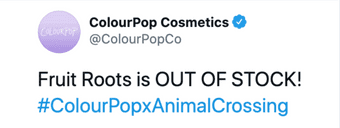Mar 2021
eCommerce strategy for brands
eCommerce connects brands and shoppers in a global marketplace | |
- Allows customer needs to be met in new ways
- Hugely competitive and dynamic
- Rewards brands who are able to innovate, learn and adapt
Success depends on a healthy funnel
- Demand can be built through brand advertising, social & influencer marketing or content / inbound marketing
- Brands who have a good relationship with their audience are better placed to innovate and sustain their prices
- Products without a funnel may still be discovered on retailer websites and through shopper advertising, but are vulnerable to copycats and margin pressure
Consider partnering with a specialist retailer
- Some categories have specialist retailers (e.g. Sephora in beauty, Master of Malt in spirits), who offer the opportunity of win-win partnerships
- Retailers need to differentiate themselves, and exclusive brands and products are ways of doing so
- In healthy partnerships the retailer wants the brand to succeed, and leaves the brand free to focus on marketing
The importance of having your own retail site varies by category and business model
If you are service-oriented you need your own site
- This biggest advantage of a dedicated retail site comes in service-heavy purchases, which involve specialist features (of the kind provided by suppliers like Elastic Path)
- For brands who fit a consumer’s existing retailers, the consumer normally prefers to buy from those retailers (rather than a dedicated brand shop)
A dedicated site may be desirable for other reasons
- Ownership of customer data and the customer journey
- Greater freedom to experiment and learn fast
- A BATNA fallback if your retailer partnership breaks down
- The complexity of managing your own store can by minimised by using a platform for the website (like Shopify), and a platform for fulfilment (like Floship)
Brands focused on their reputation and product can succeed on Amazon
If you rely on Amazon to be discovered your margins will be thin
- Many customers are happy to buy a cheap product of acceptable quality
- They discover these products through Amazon search, driven by reviews
- Products found this way are vulnerable to substitution
- Paying for search advertising puts further pressure on margin. All retailer advertising is trackable, so be guided by ROI
Get product feedback from your audience
- Review aggregators like Bazaarvoice can help you connect with your consumers
- Don’t take the “rent-a-mob” approach. Instead focus on your real audience

The Amazon context is not suitable for lifestyle brands
Be as innovative and agile as you can
Responsive supply chain
- Make your supply chain as agile and local as possible
- Connect your data, so stock information quickly propagates from supply chain to website to shopper advertising (e.g. Google Shopping ads)

Put innovation first
- Reliable stock and rapid innovation are pressures that pull in opposite directions
- Favour innovation. Don’t let fear of out-of-stocks slow you down
- The 'digital shelf' is easily reconfigured. Scarcity cues desirability, so use out-of-stocks for news and social proof
